
The Nintendo 64 (N64) is a home video game console developed and marketed by Nintendo. It was released in Japan on June 23, 1996, in North America on September 29, 1996, and in Europe and Australia on March 1, 1997. The successor to the Super Nintendo Entertainment System, it was the last major home console to use a ROM cartridge as its primary storage format. As a fifth-generation console, the Nintendo 64 primarily competed with Sony's PlayStation and the Sega Saturn.

The 64DD is a magnetic floppy disk drive peripheral for the Nintendo 64 game console developed by Nintendo. It was announced in 1995, prior to the Nintendo 64's 1996 launch, and after numerous delays was released in Japan on December 11, 1999. The "64" references both the Nintendo 64 console and the 64 MB storage capacity of the disks, and "DD" is short for "disk drive" or "dynamic drive".

GameTek was an American video game publisher based in North Miami Beach, Florida known for publishing video game adaptations of game shows in the late 1980s and early 1990s. GameTek was a trade name for IJE, the owner of electronic publishing rights to Jeopardy! and Wheel of Fortune. Originally, IJE licensed these titles to ShareData of Chandler, Arizona; however, when IJE saw ShareData's success with the titles, IJE decided to publish the titles themselves, resulting in the founding of GameTek.

Pilotwings 64 is a 1996 flight simulation video game developed by Nintendo and Paradigm Simulation and published by Nintendo for the Nintendo 64. It was one of three launch titles for the Nintendo 64 in Japan as well as Europe and one of two launch titles in North America, along with Super Mario 64. Pilotwings 64 is a sequel to Pilotwings for the Super Nintendo Entertainment System, which was a North American launch game for its respective console in 1991. Also like that game, Pilotwings 64 received production input from Nintendo producer and EAD General Manager Shigeru Miyamoto.

Star Fox 64, known as Lylat Wars in the PAL regions, is a 1997 rail shooter game developed and published by Nintendo for the Nintendo 64. It is the second installment in the Star Fox series and a reboot of the original Star Fox for the Super Nintendo Entertainment System.
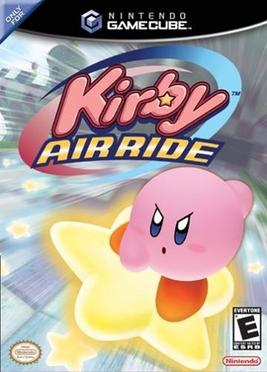
Kirby Air Ride is a 2003 racing video game starring Kirby, developed by HAL Laboratory and published by Nintendo for the GameCube.
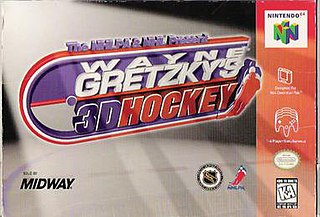
Wayne Gretzky's 3D Hockey is a video game developed and published by Atari Games for the arcade in 1996. A port for the Nintendo 64 console was released almost simultaneously with the arcade version, on November 15, 1996, making it the first-ever 4-player game for the Nintendo 64, beating Mario Kart's Japanese release by more than a month. The game was followed by a sequel, Wayne Gretzky's 3D Hockey '98.

Cruis'n USA is a racing video game developed by TV Games Inc. and published by Nintendo. It was first released in arcades in 1994 by Midway Games, with a port to the Nintendo 64 developed by Leland Interactive Media released in 1996. It is the first game in the Cruis'n series and features races set in locations across the Continental United States.
Panasonic M2, earlier known as 3DO M2, is a multimedia terminal and cancelled video game console. It was initially developed by The 3DO Company as a peripheral chip for the 3DO hardware before turning into a standalone successor system. In January 1996, the technology was acquired by Matsushita (Panasonic) who continued development as their own game console before cancelling it altogether in 1997. The M2 technology was then incorporated into commercial-oriented devices including a Konami arcade board and in interactive kiosks.
Nintendo Space World, formerly named Shoshinkai and Famicom Space World, was an annual video game trade show hosted by Nintendo from 1989 to 2001. Its three days of high-energy party atmosphere was the primary venue for Nintendo and its licensees to announce and demonstrate new consoles, accessories, and games. Anticipated and dissected each year with hype and exclusivity, it was a destination for the international video game press, with detailed developer interviews and technology demos.

War Gods is a 3D fighting video game originally released to arcades by Midway Games in 1996. Ports for the Nintendo 64, PlayStation and Windows were released in 1997. In the game, players control one of ten fighters who have been given great power by a mysterious ore that crashed-landed on Earth from outer space. The object of the game is to defeat all the other fighters to become the most powerful warrior on the planet.

Wheel of Fortune is an American television game show created by Merv Griffin, premiering in 1975 with a syndicated version airing in 1983. Since 1986, the syndicated version has been adapted into various video games spanning numerous hardware generations. Most versions released in the 20th century were published by GameTek, which filed for Chapter 11 bankruptcy protection in 1998.
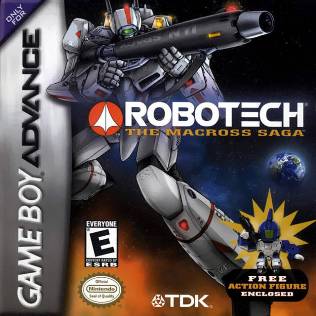
Robotech: The Macross Saga is a side-scrolling shoot 'em up for the Game Boy Advance handheld system, developed by Lucky Chicken Games and published by TDK Mediactive. This title was released during a renaissance of Robotech video games, where struggling projects were no longer cancelled and actually made it to market. A remake was published in 2021, Robotech: The Macross Saga HD Edition.

Dark Rift is a 1997 3D fighting video game for the Nintendo 64 and Microsoft Windows, developed by Kronos Digital Entertainment and published by Vic Tokai. It is notable for being the first N64 game to run at 60 frames per second. Dark Rift is considered the sequel to 1995's Criticom.

Aero Fighters Assault is an arcade-style combat flight simulator developed by Paradigm Entertainment and published by Vic Tokai and Video System for the Nintendo 64 in 1997.
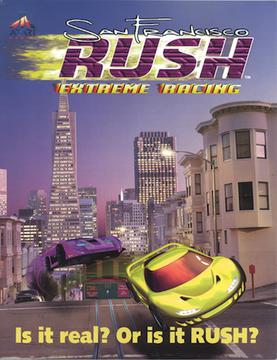
San Francisco Rush: Extreme Racing is a 1996 arcade video game developed and published by Atari Games. After appearing on arcades, it was ported to home consoles under the Midway label beginning with Nintendo 64 in 1997 and then PlayStation in 1998. An updated version named San Francisco Rush The Rock: Alcatraz Edition was later released with more tracks and cars. It was a critical and commercial hit, and became the first in the Rush series, followed up by San Francisco Rush 2049 (1999), bounded by the non-arcade Rush 2: Extreme Racing USA (1998).
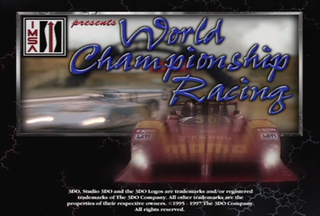
IMSA World Championship Racing is an unreleased sports prototype racing video game that was in development and planned to be published by Studio 3DO on a scheduled fall 1997 release date exclusively for the Panasonic M2. Had it been released before the launch of the console was cancelled, it would have become the first officially licensed title by the International Motor Sports Association (IMSA) and one of the first titles to be launched before the system it was designed for.















